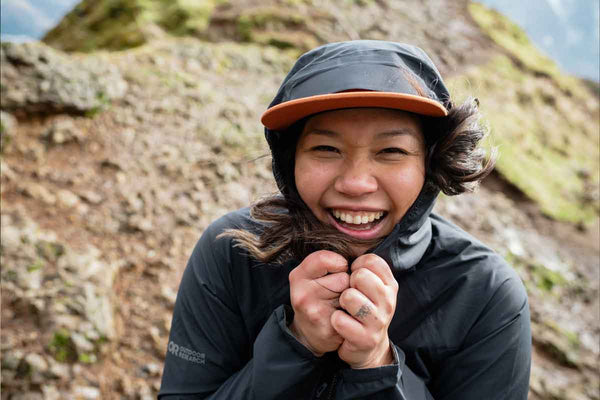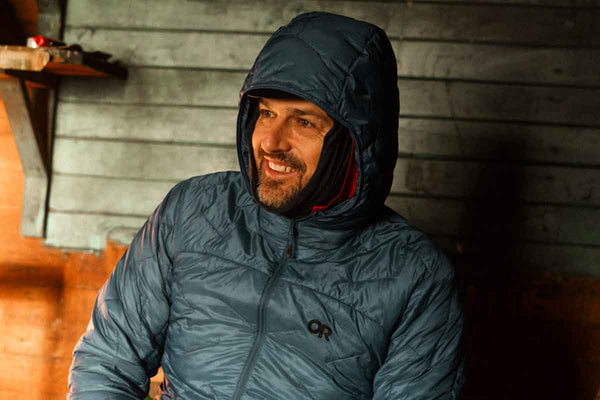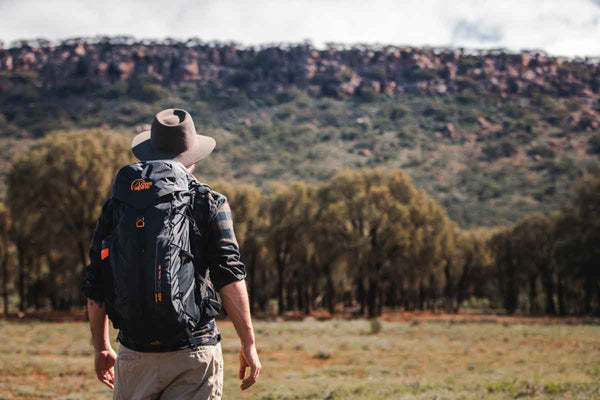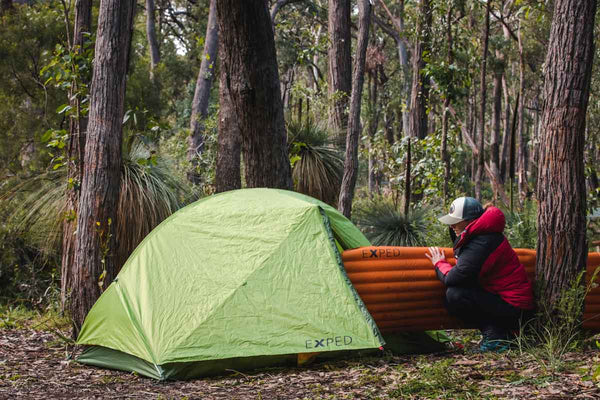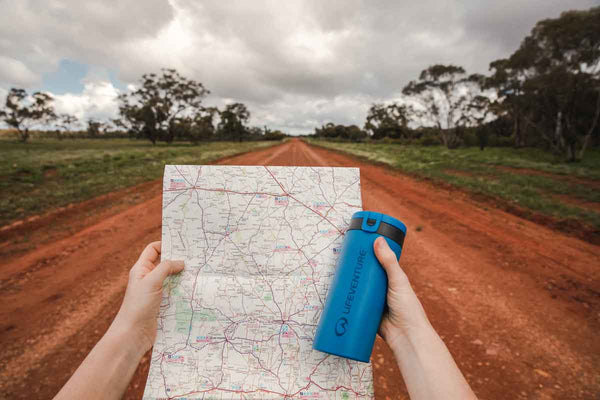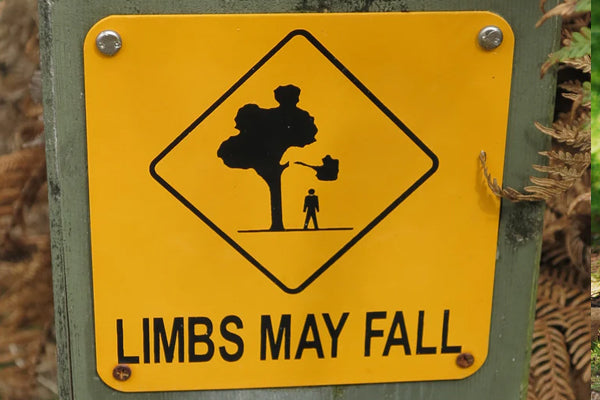
Sudden Branch Drop - The Facts.
With summer here again we thought it prudent to remind those new to bushwalking, or new to Australia, about the unpredictable and dangerous phenomenon of SBD, or Sudden Branch Drop.

As seen on the Great Ocean Walk, Victoria
The simple fact is that eucalyptus trees sometimes shed perfectly healthy limbs without warning, and if you are sitting or camping underneath the affected branch at the time you risk injury or death. Eucalypt branches are dense due to their high resin content and a moderately-sized limb can cause thousands of dollars of damage to a sturdy property, never mind a flimsy nylon hiking tent.
I personally experienced SBD a couple of years ago while camping in Glenworth Valley, NSW. We'd spent the night under a big old eucalyptus, maybe 3m from the trunk, and were making breakfast when a huge limb on the other side of the tree suddenly dropped off and crashed into the ground, snapping into three pieces and gouging a couple of large divots out of the soil. We were flabbergasted! It missed our (empty) tent by a couple of metres, but had it happened in the night and a bit closer, we would've been toast.
The reason the trees drop healthy wood is self-preservation. In times of drought or sometimes even just a regular summer, they may need to reduce their water consumption to increase their chances of survival. Just like a human with gangrene, they are better off losing one part of their body than dying altogether; the difference is that they are thinking ahead. Unfortunately for outdoors men and women, there may be no outward sign of weakness or disease. The only warning is a loud cracking noise; if you hear that, run away as fast as possible!
Whilst SBD is undetectable in advance, there are other reasons that eucalypts can drop branches so it pays to be on the look out. According to gardeningknowhow.com:
"Rot diseases in the tree occur when the Phytophthora fungi infects the roots or crowns of the tree. You may be able to see a vertical streak or canker on infected eucalyptus trunks and a discoloration beneath the bark before you see falling eucalyptus branches. If dark sap oozes from the bark, your tree likely has a rot disease. As a result, branches die back and may fall from the tree."
When bush camping it can be impossible to find a spot that isn't underneath a eucalyptus tree, but before you swear never to venture outdoors again, human injuries are rare and there are ways to minimise risk. Pay particular attention to species that have been identified as more likely to suffer SBD, which include yellow box, maiden's blue gum, mountain ash and red river gum. The worst times are late in the day or early in the morning during dry spells or outright droughts, and horizontal limbs shed more often than those angled upwards. Lastly, older trees are more prone.

Three hours and two metres from a tragic end to my One Planet Goondie tent, Glenworth Valley, NSW
It's important to know about SBD, but don't let it control your bush experiences. You're probably as likely to get struck by lightning. Focus on the more prevalent dangers out there, like snakes, bush fires and drop bears.

